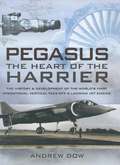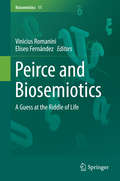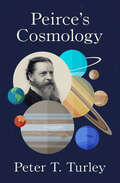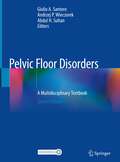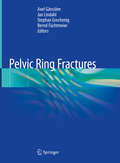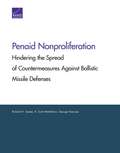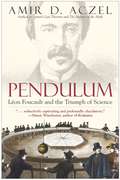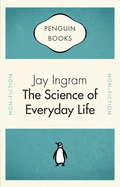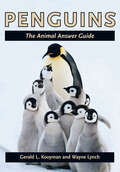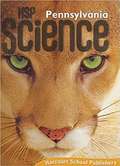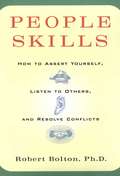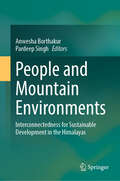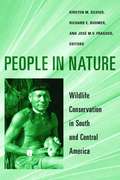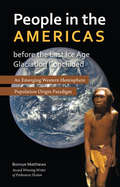- Table View
- List View
Pegasus, the Heart of the Harrier: The History & Development of the World's First Operational Vertical Take-off & Landing Jet Engine
by Andrew DowThis volume chronicles the making of the Harrier Jump Jet—the innovative Cold War fighter aircraft designed to operate from virtually anywhere. In 1957, the British engine manufacturer Bristol Siddeley turned aircraft design on its head with the creation of the Pegasus engine. Until then, aircraft designs would seek out suitable engines. Now the Pegasus was an engine in search of a suitable aircraft. The result was the famous Hawker Siddeley Harrier, the first military airplane capable of vertical takeoff and landings. To this day, Harrier Jump Jets are still in front-line service with air forces around the world including the Royal Air Force and US Marine Corps. In this volume, former Bristol Siddeley executive Andrew Dow offers an in-depth look at the Pegasus engine's original design concept, production and flight testing. Dow then covers the developments and improvements that have been made over the years. He also includes experiences of operational combat flying, both from land and sea. Written in straightforward prose that avoids technical jargon, Pegasus, The Heart of the Harrier is copiously illustrated with many previously unseen photographs and diagrams.
Peirce and Biosemiotics
by Vinicius Romanini Eliseo FernándezThis volume discusses the importance of Peirce´s philosophy and theory of signs to the development of Biosemiotics, the science that studies the deep interrelation between meaning and life. Peirce considered semeiotic as a general logic part of a complex architectonic philosophy that includes mathematics, phenomenology and a theory of reality. The authors are Peirce scholars, biologists, philosophers and semioticians united by an interdisciplinary endeavor to understand the mysteries of the origin of life and its related phenomena such as consciousness, perception, representation and communication.
Peirce's Cosmology
by Peter T TurleyA critical sketch of Charles Sanders Peirce&’s beliefs on the origin of the universe and its evolutionary development.Charles Sanders Peirce was a nineteenth-century American philosopher and logician known as the father of pragmatism. He devoted much attention to the subject of cosmology, or the origin and development of the universe, but he did not produce substantial work on the subject. In this text, Peter T. Turley collects and analyzes Peirce&’s writings on what he called &“physical metaphysics.&” Peirce&’s Cosmology offers a view of nature that may seem commonplace today, but in his time, it represented a break with traditional theories of philosophy and science. His trailblazing writings and Turley&’s analysis are sure to be of interest to readers of many schools of thought.
Pelvic Floor Disorders: A Multidisciplinary Textbook
by Giulio A. Santoro Andrzej P. Wieczorek Abdul H. SultanThis excellent textbook provides up-to-date information on all aspects of pelvic floor disorders. After an opening section on anatomy and physiology, it explains the methodology, role and application of the integrated imaging approach in detail, including the most advanced 3D, 4D, and dynamic ultrasound techniques, illustrated with hundreds of images. It then discusses in depth the epidemiology, etiology, assessment, and management of the full range of pelvic floor disorders from multidisciplinary and practical perspectives. The book also provides information on the various forms of obstetric perineal trauma, urinary incontinence and voiding dysfunction, anal incontinence, pelvic organ prolapse, constipation and obstructed defecation, pelvic pain and sexual dysfunction, and fistulas, and includes treatment algorithms as well as helpful guidance on what to do when surgical treatment goes wrong. The authors are leading experts in the field from around the globe. Since the first edition from 2010 (more than 200,000 chapter downloads), the book has been extensively rewritten and features numerous additional topics. The result is a comprehensive textbook that is invaluable for gynecologists, colorectal surgeons, urologists, radiologists, and gastroenterologists, beginners and veterans alike.
Pelvic Ring Fractures
by Axel Gänsslen Jan Lindahl Stephan Grechenig Bernd FüchtmeierThis book provides in-depth coverage of all aspects of pelvic ring fractures and their management. The opening chapters supply essential information on surgical anatomy, biomechanics, classification, clinical evaluation, radiological diagnostics, and emergency and acute management. The various operative techniques, including navigation techniques, that have been established and standardized over the past two decades are then presented in a step-by-step approach. Readers will find guidance on surgical indications, choice of approaches, reduction and fixation strategies, complication management, and optimization of long-term results. Specific treatment concepts are described for age-specific fractures, including pediatric and geriatric injuries, and secondary reconstructions. Pelvic ring fractures represent challenging injuries, especially when they present with concomitant hemodynamic instability. This book will help trauma and orthopaedic surgeons at all levels of experience to achieve the primary treatment aim of anatomic restoration of the bony pelvis to preserve biomechanical stability and avoid malunion with resulting clinical impairments.
Penaid Nonproliferation: Hindering the Spread of Countermeasures Against Ballistic Missile Defenses
by K. Scott Mcmahon Richard H. Speier George NacouziAn attacker's missile-borne countermeasures to ballistic missile defenses are known as penetration aids, or penaids. To support efforts to prevent the proliferation of penaid-related items, this research recommends controls on potential exports according to the structure of the international Missile Technology Control Regime.
Pendulum
by Amir D. AczelHe was neither a mathematician nor a trained physicist and yet Léon Foucault always knew that a mysterious force of nature was among us. Like Newton, Galileo, Copernicus, and others before him, Foucault sensed a dramatic relationship between the rotating skies above and the seemingly motionless ground beneath our feet. But it wasn't until 1851 -- in Paris, inside the Panthéon, and in the company of fellow amateur scientist Napoleon III -- that Foucault swung a pendulum and demonstrated an extraordinary truth about the world: that it turns on its axis. Pendulum is a fascinating journey through the mind and findings of one of the most important and lesser-known characters in the history of science. Through careful research and lively anecdotes, world-renowned author Amir D. Aczel reveals the astonishing range and breadth of Foucault's discoveries. For, in addition to offering the first unequivocal proof of Earth's rotation, Foucault gave us the modern electric compass and microscope, was a pioneer in photographic technology, and made remarkable deductions about color theory, heat waves, and the speed of light. At its heart, Pendulum is a story about the illustrious period in France during the Second Empire; the crucial triumph of science over religion; and, most compelling, the life of a struggling, self-made man whose pursuit of knowledge continues to inform our notions about the universe today.
Penguin Celebrations - Science Of Everyday Life
by Jay IngramHave you ever felt a sudden rush of recognition that you've been in a place before? What causes a déjà vu? Why do dogs look like their owners? What's up with insect swarms? What's the science behind showing your tongue? Do you keep drier by walking or running through a rainstorm? In this updated and expanded edition of The Science of Everyday Life, bestselling author Jay Ingram explains these and many more weird and fascinating mysteries.
Penguins (National Geographic Kids Readers)
by Anne SchreiberThey waddled into stardom in National Geographic&’s March of the Penguins film. These guys are now nature&’s ROCK STARS! If you&’re age 5, you&’re probably as tall as an Emperor. But why do they throw up so much? March this way, and find out all!National Geographic supports K-12 educators with ELA Common Core Resources.Visit www.natgeoed.org/commoncore for more information.
Penguins: The Animal Answer Guide (The Animal Answer Guides: Q&A for the Curious Naturalist)
by Gerald L. Kooyman Wayne LynchThe fascinating biology and evolutionary history of these odd, flightless birds.Flightless, iconic birds made even more famous by the 2005 film March of the Penguins, penguins conjure up images of caring parents, devoted couples, and tough survivors. In Penguins: The Animal Answer Guide, Gerald L. Kooyman and Wayne Lynch inform readers about all seventeen species, including the emperor penguin featured in the film. Do you know why penguins live only in the Southern Hemisphere? Or that they can be ferocious predators? Why are penguins black and white? Do they play? This book answers these questions and many more, illuminating the fascinating biology and evolutionary history of these odd birds. Kooyman has studied penguins for decades, and Lynch’s photographs of penguins in the wild are the best ever captured. The result of their combined effort is a book that answers every penguin question you've ever had.Whether you hope to travel to the Southern Hemisphere or simply want to learn more about wildlife, Penguins: The Animal Answer Guide deserves a spot on your bookshelf.
Penny's Pet Peeves
by Amy TaoDinosaurs ruled the earth for millions of years. But different dinosaurs had different characteristics. Some weren't even dinosaurs at all.
Penny, el cachorro de las vías del tren: Cuarta entrega de la Serie Perros Rescatados
by Brian L. PorterLa historia de Penny es una conmovedora historia sobre el rescate animal, el cariño entre amos y mascotas y la alegría que desprenden estos seres de cuatro patas en la vida de las familias a las cuales pertenecen.
Penny, la Cucciola della Ferrovia
by Brian L. PorterLa storia di Penny è il quarto libro di Brian L. Porter della serie vincitrice di premi sui cani salvati, e parla di un piccolo terrier, abbandonato in un modo particolarmente crudele, e della sua conseguente adozione e della vita insieme all’autore e alla sua famiglia. Dall’attacco da parte di un altro cane che porta ad un’operazione urgente, ai giorni sulla spiaggia cacciando i gabbiani, alle Case Signorili, la vita di Penny nel branco di cani di Brian non è stata altro che interessante e piena di eventi. Leggi la sua affascinante storia, una gradita aggiunta alla serie della Famiglia dei Cani Salvati.
Penny: A Cadelinha da Ferrovia
by Brian L. PorterA história da Penny é a quarta na série premiada de Brian L Porter sobre cães resgatados e a protagonista é uma pequena terrier, abandonada de uma maneira particularmente cruel, e a sua subsequente adopção e vida com o autor e a sua família. Desde ser atacada e precisar de cirurgia de emergência, a dias passados na costa, perseguindo gaivotas, e a casas senhoriais, a vida da Penny na matilha de cães resgatados do Brian nunca foi menos que interessante e cheias de acontecimentos. Leia a sua encantadora história, uma adição bem-vinda à série da Família de Cães Resgatados.
Penzlin - Lehrbuch der Tierphysiologie
by Horst Bleckmann Jan-Peter Hildebrandt Uwe HombergJan Peter Hildebrandt, Horst Bleckmann und Uwe Homberg haben das Standardlehrbuch der Tierphysiologie von Heinz Penzlin komplett überarbeitet und modernisiert. Den Studierenden bietet es nun den aktuellen State of the Art der vergleichenden Tierphysiologie. Diese integrative Wissenschaftsdisziplin ist wichtig für all jene, die sich in den Bachelor-Vertiefungsphasen oder in Master-Studiengängen der Biowissenschaften mit Fragen der funktionellen Anatomie, der vegetativen Physiologie, der Neurobiologie, der Stoffwechselphysiologie, der Sinnes- und der Muskelphysiologie mit ökologischen, systemisch-vergleichenden oder molekularen Ansätzen beschäftigen.Die neue Auflage nutzt didaktische Elemente, erklärt in Fußnoten Herkunft und Bedeutung von Fachbegriffen, enthält ein Glossar und bietet elektronische Zusatzmaterialien.
People Living with Disabilities in South African Cities: A Built Environment Perspective on Inclusion and Accessibility (Sustainable Development Goals Series)
by Hangwelani Hope Magidimisha-ChipunguThis book offers a unique and much-needed perspective on disability and accessibility in urban context in South Africa. Drawing on lived experiences of disabled people, it documents the multidimensional aspect of poverty in the context of disability and built environment to show how poorly planned cities create physical and social barriers that impact the life of people with disabilities. People Living with Disabilities in South African Cities is structured around three main insights and themes that inform the author's approach to disability and cities. The first is disability research; drawing on studies on planning and the built environment, the author highlights the role of physical environment in promoting inclusion and accessibility for people with disabilities. The second theme is social protection, i.e. ways to provide support and resources for people with disabilities to enable them to participate fully in society. Finally, the author explores the policies and legislative context needed to create an inclusive society, challenging the role of governments and policy makers. Offering a comprehensive approach to studying disabilities and cities, the author aims to bridge the gap between disability studies, inclusive planning, and design to support the development of accessible cities in the African context. This invaluable book not only raises awareness on social inclusion, but also offers an invaluable guide to policy makers across the Global South to tackle and address inequalities.
People Skills: How to Assert Yourself, Listen to Others, and Resolve Conflicts
by Robert BoltonA wall of silent resentment shuts you off from someone you love....You listen to an argument in which neither party seems to hear the other....Your mind drifts to other matters when people talk to you.... People Skills is a communication-skills handbook that can help you eliminate these and other communication problems. Author Robert Bolton describes the twelve most common communication barriers, showing how these ""roadblocks"" damage relationships by increasing defensiveness, aggressiveness, or dependency. He explains how to acquire the ability to listen, assert yourself, resolve conflicts, and work out problems with others. These are skills that will help you communicate calmly, even in stressful emotionally charged situations. People Skills will show you * How to get your needs met using simple assertion techniques * How body language often speaks louder than words * How to use silence as a valuable communication tool * How to de-escalate family disputes, lovers' quarrels, and other heated arguments Both thought-provoking and practical, People Skills is filled with workable ideas that you can use to improve your communication in meaningful ways, every day.
People Who Use Magnets at Work
by Cathy FrenchPeople Who Use Magnets at Work discusses jobs where magnets are used. Some of the jobs included in this book are a doctor, builder, and teacher.
People and Mountain Environments: Interconnectedness for Sustainable Development in the Himalayas
by Pardeep Singh Anwesha BorthakurPeople living in the mountains maintain a unique relationship with their surrounding environment. Humans have settled in mountainous regions all across the globe for centuries, adapting to the challenging terrains and establishing exceptional cultural practices and lifestyles. Until today, they depend on their immediate ecosystems for their everyday necessities while also conserving those environments through their own traditional practices and belief systems. Understanding and addressing the ease and complexities of the relationship between people and mountains is essential for sustainable development through overall conservation and well-being of both the environment and the communities living in these regions. The mountain communities in the Himalayas and their interconnectedness with their surroundings could provide important insights in this regard. For instance, the interaction between humans and mountains in the Himalayas is diverse, spanning across various cultural, economic, political, environmental and recreational dimensions and parameters. As sustainable development is a core goal of the world today, it is both interesting and pertinent to explore these various aspects and locate possible learnings in the present-day global environmental scenario. Accordingly, this book is an attempt to situate the interconnected between people and the mountains in the Himalayan landscape towards tracing learnings for sustainable development. Our aim is to edit a holistic volume where aspects ranging from ecosystem services to cultural and spiritual significances of the mountains for the local communities and from contributions of the Himalayas in relation to water, agriculture and food practices to the challenges associated with haphazard infrastructural developments and environmental justice implications are adequately addressed. We acknowledge that balancing the human needs of the mountain communities while ensuring environmental conservation is a major challenge. Ecologically fragile and biodiversity rich the Himalayan region is no exception. Further, mountain communities in the Himalayas are facing tremendous challenges in adapting to changing climate conditions, such as altered precipitation patterns and increased frequency of extreme weather events. Unsustainable economic activities in the form of chaotic tourism practices and infrastructural developments among others add to the emerging challenges. Accordingly, it is important to put research efforts towards active sustainable development practices where human needs are met while minimizing undesirable impacts on the Himalayan mountain ecosystems. The Himalayas are critical for global ecological balance. Therefore, this book will not only be helpful for the countries situated in these mountain regions alone, but also will provide useful insights for environmental sustainability at a much larger global scale.
People and Spaces in Roman Military Bases
by Penelope M. AllisonThis study uses artefact distribution analyses to investigate the activities that took place inside early Roman imperial military bases. Focusing especially on non-combat activities, it explores the lives of families and other support personnel who are widely assumed to have inhabited civilian settlements outside the fortification walls. Spatial analyses, in GIS-type environments, are used to develop fresh perspectives on the range of people who lived within the walls of these military establishments, the various industrial, commercial, domestic and leisure activities in which they and combat personnel were involved, and the socio-spatial organisation of these activities and these establishments. The book includes examples of both legionary fortresses and auxiliary forts from the German provinces to demonstrate that more material-cultural approaches to the artefact assemblages from these sites give greater insights into how these military communities operated and demonstrate the problems of ascribing functions to buildings without investigating the full material record.
People in Nature: Wildlife Conservation in South and Central America
by Kirsten Silvius Richard Bodmer José FragosoThis book reviews wildlife management and conservation in Central and South America. The book discusses the threats to biodiversity in this area including habitat fragmentation, development, ranching, tourism as well as hunting. The book contains contributions from many local Latin American authors who work there daily and are exposed to the numerous and unique issues that need to be taken into account when talking about conservation in Central and South America.
People in the Americas Before the Last Ice Age Glaciation Concluded: An Emerging Western Hemisphere Population Origin Paradigm
by Bonnye MatthewsWARNING: Everything you know about the peopling of the Americas is wrong.People in the Americas before the Last Ice Age Glaciation Concluded: An Emerging Paradigm on Western Hemisphere Population Origin covers the turn of the century emerging science on the origin of human population in the western hemisphere. It is a booklet that is designed to provide a reference bridge until the new information can be included in textbook presentations. With the ability to examine DNA evidence on extremely old human remains and findings at greater depth than formerly considered, information grows at a rapid rate. The science is in its infancy, but surprising finds occur moment by moment.
People of the Lake: Mankind and its Beginnings
by Richard E. Leakey Roger LewinIn the crocodile-infested waters near Lake Turkana in Kenya, Leaky is piecing together the clues of an ancient puzzle, reconstructing the world of our primeval forefathers in eerie detail.
